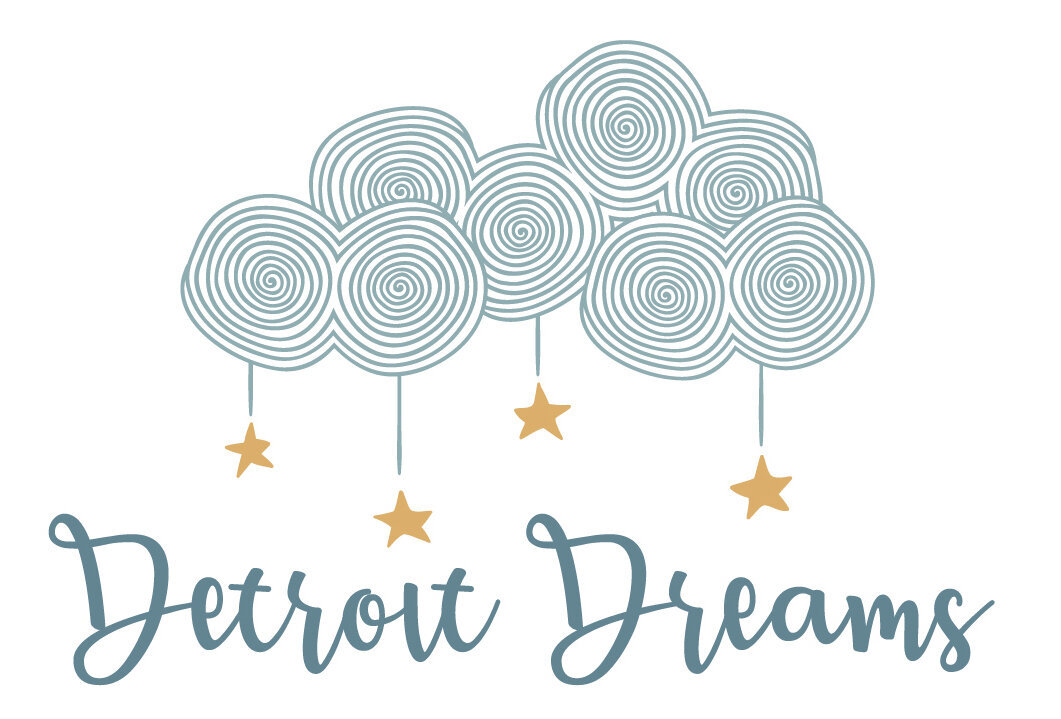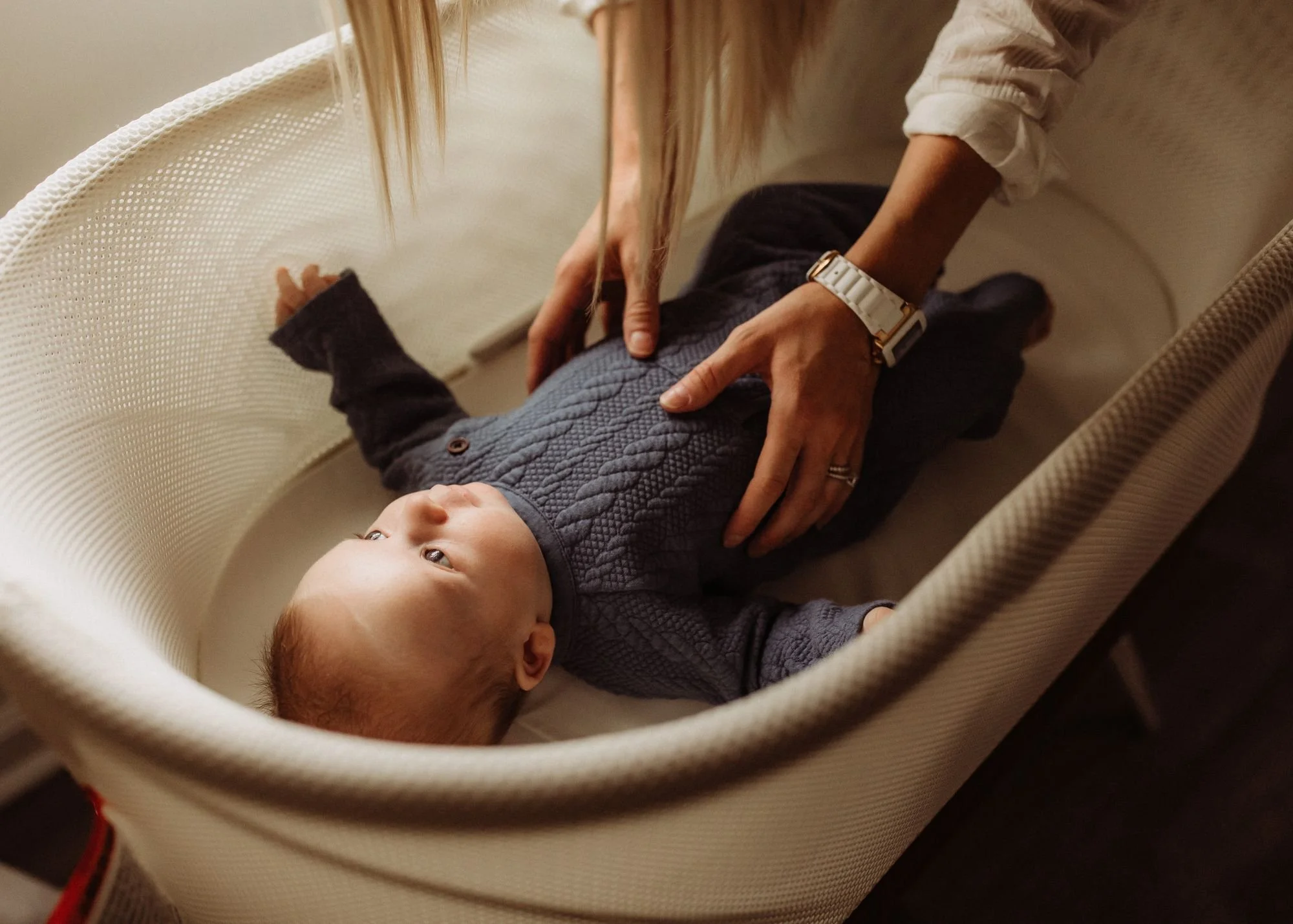When to Transition Your Baby Out of the Bassinet
/As your baby grows, their sleep needs and abilities change. One of the first major milestones in your baby’s sleep journey is when it’s time to transition them out of the bassinet and into a crib. While this is an exciting step, it can also be a tricky one. It’s essential to know when your baby is ready for this change and how to make the transition as smooth as possible. Here are some key signs that it’s time to transition your baby out of the bassinet, along with expert tips to help guide you through this important step in your baby’s sleep journey.
Signs Your Baby Is Ready to Transition Out of the Bassinet
Baby Has Outgrown the Bassinet Size
The most obvious sign it’s time to transition your baby out of the bassinet is when they’ve simply outgrown it. Bassinets are generally designed for babies up to around 15-20 pounds or until they can roll over, push up on their hands and knees, or start to push themselves up. If your baby is starting to show signs of physical mobility, it’s time to move them to a more spacious sleeping arrangement like a crib.
Baby Is Rolling Over
Rolling over is a major milestone in your baby’s development. If your baby is starting to roll over, it may be time to transition out of the bassinet. The bassinet’s sides are typically not as high as a crib’s, and as your baby becomes more mobile, there’s an increased risk of them rolling over and getting stuck or falling out of the bassinet. If your baby is showing signs of rolling, move them to a crib where they can have more room to move safely.
Baby Is No Longer Sleeping Well in the Bassinet
If your baby is waking up more frequently, seems uncomfortable, or is having trouble sleeping in their bassinet, it might be a sign that they’re ready for a bigger, more comfortable sleeping space. A cramped bassinet can make it difficult for your baby to get quality sleep, especially as they grow and develop new sleep patterns. If your baby is restless in their bassinet, it’s a good idea to start thinking about the transition to a crib.
Baby Needs More Space to Move and Stretch
As your baby gets older, they will naturally start to move more during sleep. If you notice that your baby is often waking up because they’ve kicked their legs or stretched out and bumped into the sides of the bassinet, it might be time for a bigger space where they have room to stretch and move freely. A crib offers more space for your baby to sleep comfortably and move around without restrictions.
Tips from a Sleep Coach: Making the Transition Smooth
Start Gradually
Transitioning from a bassinet to a crib can be a big change for your baby, so it’s best to take it slow. If possible, begin by letting your baby nap in the crib during the day so they can get used to the new environment without the pressure of a full night’s sleep. Once they’re comfortable with naps in the crib, work on moving them there for overnight sleep.
Create a Familiar Sleep Environment
One way to make the transition easier for your baby is by keeping the sleep environment as familiar as possible. Use the sleep sack, and any other sleep aids you’ve been using in the bassinet. You can also sleep with their sheet yourself one night prior to transitioning them, so that the sheets smell like you. This will help your baby feel more comfortable and secure in their new sleeping space. Keeping the same sleep routine, such as a calming bedtime routine with a bath, feeding, or lullabies, will also help signal to your baby that it’s time for sleep, even in a new space.
Ensure the Crib Is Safe
Before transitioning your baby to a crib, make sure the crib is safe and ready for sleep. This includes ensuring the crib mattress is firm, the crib is free of any loose bedding or pillows, and the crib meets safety standards. According to the American Academy of Pediatrics (AAP), the safest sleep environment for babies is one that is free of any soft bedding, including pillows, blankets, crib padding, and stuffed animals, to reduce the risk of suffocation and Sudden Infant Death Syndrome (SIDS). A safe crib environment is key to ensuring your baby sleeps well and safely.
Be Prepared for a Few Rough Nights
Any transition can be challenging, and the move from a bassinet to a crib might be no different. It’s important to have realistic expectations and be prepared for a few rough nights while your baby adjusts. Some babies may take longer than others to adjust to the new sleep space, so patience is key. Stick to your bedtime routine and give your baby time to get used to their new crib and provide reassurance through the night as needed.
Check for Sleep Associations
If your baby is having trouble settling into the crib, it could be because they’ve developed sleep associations with the bassinet, such as needing to be rocked to sleep or fed to sleep. When transitioning to the crib, may be a good idea to start addressing these sleep associations. Help your baby learn to fall asleep independently by gently reducing the amount of assistance they need. This will make the transition smoother and help your baby learn to self-soothe in their new sleep space. Not sure how to go about this? Reach out for a consultation with one of our sleep coaches!
Keep a Consistent Sleep Routine
Babies thrive on routine. Keeping a consistent sleep routine will help your baby adjust to their new sleep space. This might include a warm bath, a gentle massage, dimming the lights, and singing a lullaby or playing calming music before bed. A predictable bedtime routine will help signal to your baby that it’s time for sleep, making the transition to a crib less stressful for both of you.
Transitioning your baby out of the bassinet is an important step in their sleep development. Knowing when to make the move and how to do it can help ease the process for both you and your baby. By watching for signs like physical growth, rolling over, or discomfort, you can determine the right time to make the switch. And with these tips, you’ll be well-prepared to ensure a smooth and successful transition to the crib, setting the stage for better sleep for everyone in your family.
Remember to always follow AAP guidelines for safe sleep, ensuring your baby has a safe environment in their new crib. If you're unsure or need extra guidance through the process, consider reaching out to connect with one of our sleep coaches who can provide personalized support. The goal is always to help your baby sleep soundly and independently while keeping the experience as smooth and stress-free as possible.



